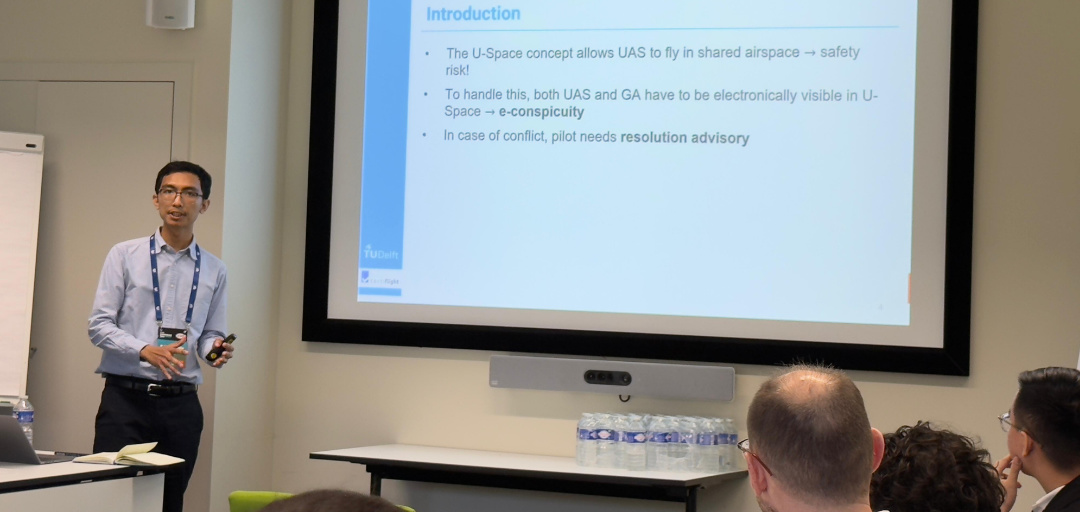The UTM Box technology of Certiflight validated in a new study: Addressing safety and conflict resolution challenges for UAS operations
April 30, 2025
The increasing integration of Unmanned Aerial Systems (UAS) into controlled airspace presents significant operational and safety challenges, particularly in conflict detection and resolution for Beyond Visual Line of Sight (BVLOS) operations. Ensuring reliable separation management in U-Space requires robust e-conspicuity solutions that address uncertainties in Communication, Navigation, and Surveillance (CNS) systems.
With the aim of evaluating the technology developed by the European Certiflight project, which is completing its first phase of development, authors Muhammad Fazlur Rahman, Lorenzo Porricelli, Francesco Russo, and Joost Ellerbroek wrote a paper titled ‘Validation of e-Conspicuity and Conflict Detection and Resolution Services in GA-UAS Encounter’.
This paper aims to assess the effectiveness of UTM Box by Certiflight, an e-conspicuity device designed for General Aviation (GA) and UAS operations. It incorporates authenticated GNSS tracking, blockchain-based data integrity, and conflict resolution advisory services.
To test the proper functioning of the technology and identify potential challenges or areas for improvement, Certiflight conducted flight validation tests using a general aviation aircraft. The results demonstrated that the UTM Box technology successfully provided conflict resolution advisories. Furthermore, several uncertainties in the UTM Box are quantified within the test activities.
The paper was presented by Muhammad Fazlur Rahman from Delft University of Technology, (Netherlands) at ICNS Conference, the 25th integrated communications, navigation, and surveillance conference, held in Brussels in April.


This study highlights the importance of integrating robust e-conspicuity and conflict resolution solutions to ensure safety in UAS operations. The results obtained are a crucial step towards refining the technologies needed to manage airspace safely and efficiently, particularly in more complex operations such as BVLOS with heterogeneous airspace users. We are excited about the future prospects of the Certiflight project and its contribution to the advancement of unmanned aviation.
Muhammad Fazlur Rahman
TU Delft
Certiflight aims to continue developing its potential, and future work will focus on refining conflict resolution strategies, integrating advanced filtering techniques to mitigate sensor noise, and enhancing the pilot interface design to improve situational awareness and decision support.
You can download the full version of the scientific paper.

